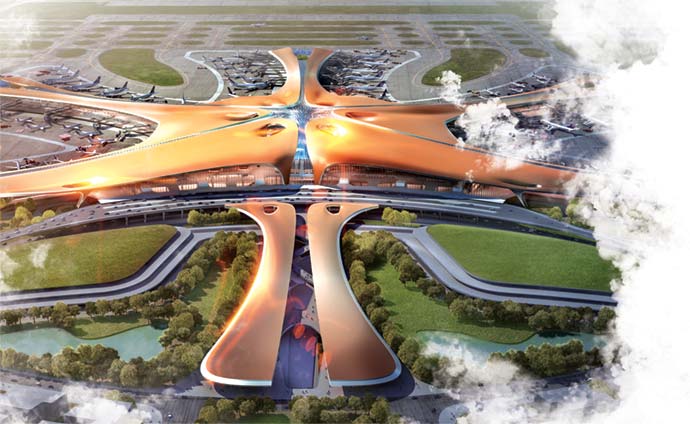Looking for places where major employers and major populations both have a strong chance of being served by continuing infrastructure investment? Look no further than the second annual Global Groundwork Index rankings.
As with our first edition last year, these unique rankings, a result of Site Selection’s collaboration with infrastructure advisory and events firm CG/LA in Washington, D.C., offer a snapshot of which territories are seeing concurrent strong investment trends in infrastructure projects and corporate end-user facility projects. (See CG/LA Chairman and CEO Norm Anderson’s commentary.)
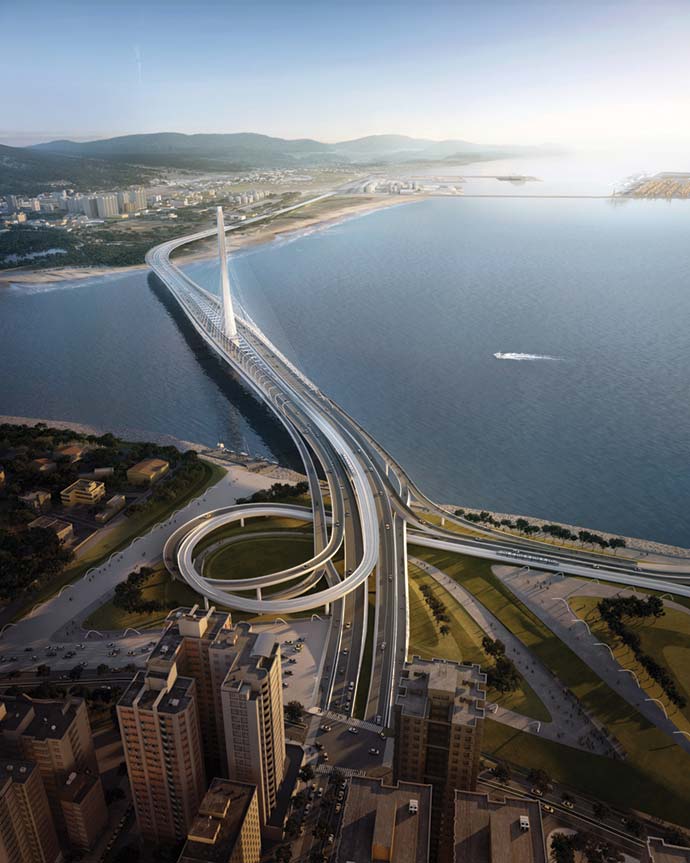
Cross-pollinating raw project data from both categories, we index cumulative and per-capita calculations for nations and for U.S. states to arrive at the rankings presented here. In addition, we offer separate lists ranking countries and states by infrastructure investment only.
This year, Canada and Texas repeat at No. 1. The UK has moved up a number of spots, and Bahrain and Denmark enter the Top 10.
Mexico’s No. 8 position seems tenuous now, given that the country’s new president caused a major airport project to stop in its tracks. But Canada’s status shows no sign of waning, owing to such factors as frigid weather (maintain roads well or you’ll pay a price) and a relatively small population (helping those per-capita numbers). The nation’s history of natural resources exploitation is a contributing factor too. In fact, the presence of so many mining projects is why Canada and its provinces maintain open records in “major project inventory” documents and websites, where the projects include not only the mines, but the infrastructure projects such developments naturally require, from highways to railroad hubs to power transmission to new ports for LNG.
2019 Global Groundwork Index Country Rankings:
(combined infrastructure and corporate facility investment strength)
| 1 | Canada |
| 2 | United States |
| 3 | United Arab Emirates |
| 4 | Australia |
| 5 | United Kingdom |
| 6 | Singapore |
| 7 | Brazil |
| 8 | Mexico |
| 9 | Bahrain |
| 10 | Denmark |
Where’s China, you ask? Mired in a dearth of data and a wealth of humans, it appears, with only 50 projects tracked by CG/LA against a population closing in on 1.4 billion. That’s not to say the People’s Republic isn’t on the ball when it comes to infrastructure investment on a grand scale. China still places 13th, thanks to prodigious investment coming to more than $547 billion. Stories abound of highways, railways, bridges, ports and airports getting done in record time, with the storytellers often comparing them to the snail’s pace of such projects in the U.S. On such project is the new Beijing Daxing International Airport due to be completed in September at a cost just under $12 billion. Moreover, the country’s influence goes well beyond its own borders, as the new Asia Infrastructure Development Bank and the Belt & Road Initiative demonstrate.
Among the states making the top 10, Texas, Louisiana, Virginia and Ohio (leaping from outside the Top 10 to No. 4) lead the way, with Arizona also coming from outside last year’s Top 10 to land at No. 6. Illinois is No. 5, still pursuing plenty of infrastructure projects and still attracting plenty of corporate projects, even as its finances hover like a dark cloud over infrastructure maintenance and pensions.
No. 7 Georgia, like many of its neighbors, is developing an inland port network, but its crowning infrastructure assets are the Georgia Ports Authority (whose Garden City Terminal in Savannah saw more than 4.3 million TEUs pass through in 2018) and Hartsfield-Jackson International Airport, which serves 107 million passengers, employs more than 63,000, and has a direct economic impact of $34.8 billion in metro Atlanta.
The leadership of Texas in economic development is well known to any reader of this publication, which has repeatedly ranked the state tops in the nation for corporate project attraction. Behind those victories lies the state’s more mundane but powerful infrastructure backbone, from growing ports and airports to rail traffic, new highways, exemplary wind power development (22,051 MW of installed wind capacity, the most of any state in the nation) and robust pipeline and power transmission development, 20 years after the state deregulated the electricity market. A few markers:
- The Electric Reliability Council of Texas (ERCOT), which manages the flow of electric power to more than 25 million Texas customers, reports that 376 billion kilowatt-hours of energy were used in 2018, a 5% increase over 2017.
- The 2018 Texas Aviation Economic Impact Study prepared for the Texas Department of Transportation’s (TxDOT’s) Aviation Division found that the state’s 289 airports are affiliated with $94 billion in annual economic output, around $30 billion in payroll and 778,955 jobs. General aviation does its part: Texas has more registered aircraft than any other state — nearly 25,400, or 9% of all U.S. registered aircraft.
- The linkage between economic prosperity and infrastructure was highlighted in December 2018 when the Texas DOT was awarded $50 million in federal Better Utilizing Investments to Leverage Development (BUILD) Transportation grants to pay for critical improvements needed to address safety and connectivity in the booming Permian Basin. “The Permian Basin is a strategic asset not only for Texas, but for the entire United States,” said TxDOT Chairman J. Bruce Bugg, Jr. “Governor Abbott has asked TxDOT to help ensure infrastructure needs in the Permian Basin are made a statewide priority.”
When Assets Turn to Risks
Wherever you roam, the efficiency and safety of the roaming matter more than ever. Nowhere is that truer than in the U.S. In June, the 1,100-member Counselors of Real Estate organization identified U.S. infrastructure as the No. 1 concern regarding significant impact on real estate. A close second was attainable housing — which many would consider part of infrastructure.
“Inadequate infrastructure creates a hard ceiling to economic development, and real estate values are tied to sustainable growth,” said Julie Melander, CRE, 2019 chair of The Counselors of Real Estate. “The U.S. must invest in infrastructure to compete globally, but right now it is lagging other nations on infrastructure investment.”
Coming in third were weather and climate-related risks — again, a factor directly impacting infrastructure because of direct damage from major weather events.
“Weather and climate-related risk has emerged as a new — and likely permanent — aspect of fiduciary duty and what it means to assess, disclose, and manage these risks for real estate investments,” said Melander.
All of the above were on the minds of attendees at the FY2020 State Fiscal Conference, “Truth and Integrity in State Budgeting: Looming Risks, Durable Solutions,” that I attended this summer at the Federal Reserve Bank of Atlanta, which co-hosted the event with the Volcker Alliance. Topics such as workforce development, looming state pension fund obligations (as high as $1.4 trillion) and rainy-day funds were on the agenda, but infrastructure and climate kept rearing their heads. In a session called, “Infrastructure: Quantifying Risks to Reap the Rewards,” some heavy hitters in the field made some choice observations.
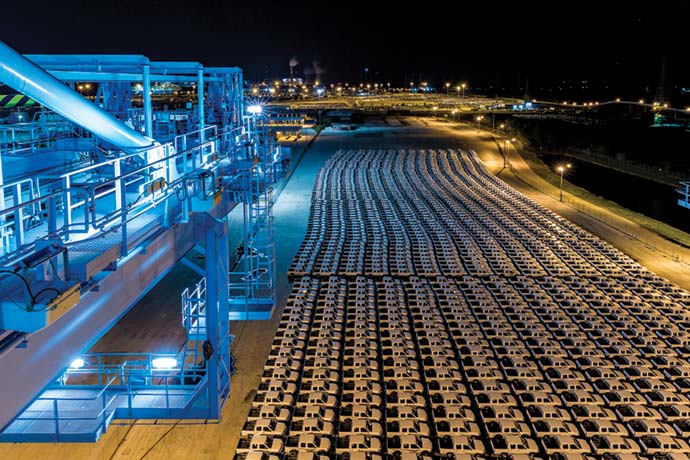
George “Mac” McCarthy, president and chief executive of the Lincoln Institute of Land Policy, noted that his organization has launched a campaign for infrastructure health because of rising concern over the risk generated by “the tendency of municipalities to defer maintenance when they run into problems on their income statements. It’s more than troubling — it’s alarming,” he said, “and we think it probably more than rivals the pension obligations because of the sheer volume of deferred maintenance we now need to make up for, and the likelihood of really devastating events when infrastructure fails,” such as the 2007 highway bridge failure in Minneapolis or 2014’s explosions from 100-year-old gas lines in Harlem. However, being open and transparent while taking inventory of the infrastructure that keeps getting a “D” grade from the American Society of Civil Engineers has its risks too.
2019 Global Groundwork Index State Rankings Top U.S. States
| 1 | Texas |
| 2 | Louisiana |
| 3 | Virginia |
| 4 | Ohio |
| 5 | Illinois |
| 6 | Arizona |
| 7 | Georgia |
| 8 | New York |
| 9 | North Carolina |
| 10 | Iowa |
“There’s political risk and financial risk in disclosing the actual condition of your assets,” McCarthy said. “It’s also a signal to the population that you’re going to have to raise revenue somehow. And you can destroy your own credit rating. California, the first to report, was actually punished for disclosing. Unless we find a way to more uniformly require this kind of analysis and reporting, we’ll create the wrong kind of selection bias, [where states would] rather be an ostrich than stand up and take the heat.”
P3 Magic Has Worn Off
“Right now people just throw up their hands and say, ‘Start anywhere,’ ” said Tracy Gordon, a senior fellow at the Urban-Brookings Tax Policy Center who formerly served as a senior economist with the White House Council of Economic Advisors. She noted that 77% of all infrastructure spending comes from states and localities. “It’s true there is the Interstate highway system, but other than that, there’s no such thing as a national infrastructure,” she said. “All kinds of decisions have to be made at the local level, and they’re not always well coordinated. The Bayonne Bridge project required five local governments to come to agreement.”
The federal government can do a lot in terms of backing grants and bonds and serving as a clearinghouse for public-private partnerships (P3s), she said. But she warned against the allure of P3s as a panacea.
“They are not magic,” she said, “and financing is not funding. Those investors are eager to be paid back, usually through tolls.”
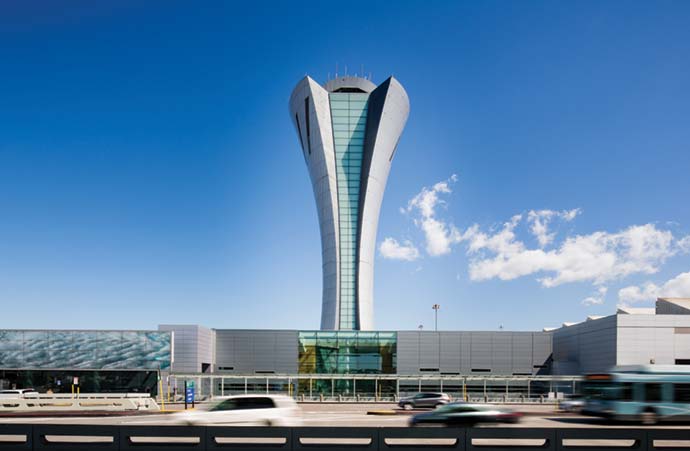
“There is a lot of magical thinking about P3s,” McCarthy concurred, noting a study the Lincoln Institute funded a decade ago that found 88 of 110 P3 agreements had failed. “We tracked it back, and the cause in many cases was triggered by the public side not honoring the terms of the agreement,” he said. A closer look revealed that such failures stemmed from being outgunned at the negotiating table.
Infrastructure Top 10 Countries
| 1 | Brazil |
| 2 | Canada |
| 3 | Chile |
| 4 | United States |
| 5 | Qatar |
| 6 | Kuwait |
| 7 | Columbia |
| 8 | Angola |
| 9 | United State Emirates |
| 10 | Australia |
“The average public official who’s going to negotiate a P3 might do that once or twice in their lives, and they’re sitting across from people doing in two or three times a month. Until we find a way to balance the table and get more realistic negotiations on P3s, they’re probably not the right way to go.”
“I think we can learn from Canada, which has set up at the national and provincial levels dedicated P3 entities,” said Dennis Lockhart, the former Atlanta Fed president who now serves as distinguished professor-of-the-practice at Georgia Tech’s Sam Nunn School of International Affairs. “The episodic problem of negotiating against people doing it all the time is alleviated by professionalizing the public side.”
Thomas G. Doe, founder and president of Municipal Market Analytics Inc., said long-term credit issues are coming to the fore, and noted that healthcare and pensions are indeed heavy burdens. But the heaviest is climate change.
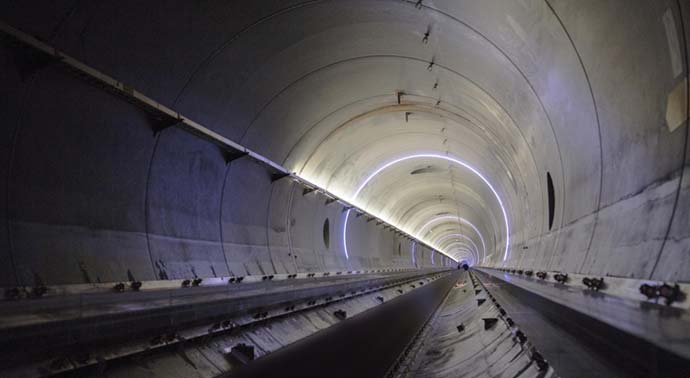
“We’re going to be in a cycle where we first denied it exists, then we build projects to defend against it, and ultimately we have departure from areas affected by it,” said Doe, silencing the room. Noting that half of the U.S. population lives within 50 miles of a coast, he said his firm is working with a large data institution and one other firm to closely examine what risks from such events as wildfires, flooding, intense heat and hurricanes mean for the 55,000 or so issuing entities across the country. “It gets ignored. States are not really focused on it,” he said. But now is the time. “We need to look really hard at potential risk related to climate.”
Infrastructure Top U.S. States
| 1 | New York |
| 2 | California |
| 3 | Louisiana |
| 4 | Texas |
| 5 | Virginia |
| 6 | District of Columbia |
| 7 | Arizona |
| 8 | Utah |
| 9 | Illinois |
| 10 | Nevada |
Paying for infrastructure requires looking around for new revenue sources, from online gambling taxes to cannabis taxes to gas taxes. Doe said a vehicle-miles-traveled tax makes sense, and could, once people get over their “Orwellian overhang” worries, be administered by drones. Doing something with sometimes large portfolios of state-owned or municipally owned land is another revenue option for funding infrastructure. But again, a vicious cycle may be operating.
“Already we’re seeing cities in the U.S. curtailing plans for new infrastructure or maintenance of existing infrastructure in areas susceptible to climate risk,” said Doe. “They’re already stopping funding, yet there’s no disclosure of that.”
In Australia, home of global P3 champion Macquarie, asset recycling — whereby a monetizable asset is sold and the gains invested into another infrastructure project — is in vogue.
“We see the potential of being able to tax the land value of infrastructure investments,” said McCarthy of the Lincoln Institute. Such windfalls are not well understood, he said. “The incremental land value increase associated with infrastructure investment usually runs to a factor of six. So you only have to capture 16% of it.” In Colombia, he said, those who benefit from new infrastructure investments are assessed a tax called a betterment contribution. In the U.S., the pockets of speculators see the betterment first. Noting how values around Atlanta’s popular Beltline trail have skyrocketed, he said, “The land costs along the Beltline are now prohibitive, because speculators already have capitalized. We have to be able to get out ahead of that.”
